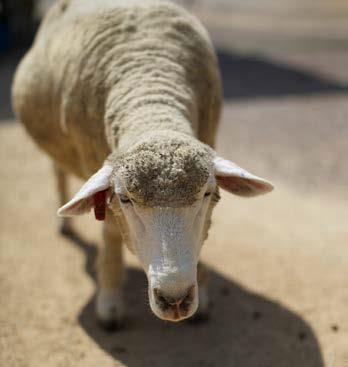Winter is properly rearing its head with the first frost that had already occurred in places. The unpredictability of nature always presents challenges and can catch even experienced farmers unexpectedly. It is therefore of the utmost importance to not only rely on what the weather prophets say.
Even if a wet winter is predicted, our planning should rather be to prepare for the worst. Farmers who act proactively will reap the benefits in the form of cost savings and better production.
The challenges that the winter months pose to livestock farmers can easily be overcome if a farmer plans for it throughout the year. Challenges that farmers should provide for are the quality and quantity of grazing available in the winter period, veld fires, unusually long winters, as well as production targets that must be achieved to farm profitably.
As seasoned farmers always say, you should never run out of plans. Based on the information provided by nutritionists, ProAgri compiled the following tips on feed flow, feed requirements, and other guidelines to tackle wintering as practically and economically as possible. The timing of the placement of winter licks is extremely important. Knowledge of the existing nutritional resources to provide the right supplements for your animals, is the key secret to the successful wintering of your cattle so that they can maintain condition and achieve the long-term goals for reproduction.
Lick programmes and lick intake
One of the most important factors in determining how much feed should be provided, is the fact that feed intake is the crucial driver of livestock production. After the first frost, the nutritional value of the veld decreases drastically, and it then consists mainly of fibre. Lick can supplement the nutritional value. It is therefore important to provide a good protein lick as soon as the first frost appears.
Lick intake is also a good indication of roughage quality and availability. The lower the roughage quality or its availability, the higher the lick intake of ruminants. Lick can be a large part of a farmer’s input costs, but if lick is used judiciously, it is very cost effective. It is therefore important to follow a wellplanned lick programme.
Please note that lick only serves as a supplement to the limited nutrients or nutrient values from grazing. It is not a feed in itself. Lick is only recommended when there is sufficient grazing or other roughage available.
Maintaining body condition
The economic maintenance of body condition is of cardinal importance in any wintering programme. Ruminants create energy from digestion of feed, but they also need sufficient protein to feed the rumen microbes that help to digest the feed. To measure the feed requirements of the livestock and the availability of the different feed sources, the terms dry matter (DM) and dry matter intake (DMI) were created. This is the value of the feed, without the effect of moisture and other aspects, to determine and balance the roughage intake of the animal accordingly. Wintering of livestock remains one of the biggest challenges for any livestock farmer.
The following guidelines or principles are important:
- Adequate quantities of roughage in the form of saved grazing are a prerequisite for successful wintering of livestock on winter fields.
- Supplementation should take place from as early as mid-March, even earlier depending on the season. Weighing animals regularly can determine exactly when growth stops, or weight loss occurs.
- Supplementation should not be stopped after the first rain, but only when enough edible material is available in the spring to cause lick intake to drop drastically.
- When non-protein nitrogen or NPN such as urea is used as a protein source, a limited energy supplement is essential to achieve the best utilisation of urea.
- When urea is used in winter licks, it remains economical and beneficial for body mass to add a small amount of ammonium sulphate.
- Phosphorus supplementation has a suppressive effect on body mass and should not be included in winter licks for dry animals.
- If the volume of your winter grazing is a problem, get rid of old and surplus cattle in time.
- Preserve your cash flow and take care of the core herd. It is important to decide which animals are the producing ones, and to maintain them in the best possible condition.
Good grazing management remains the key to success for wintering in the summer rainfall areas of Africa and Southern Africa. It is important to adapt the animal numbers to the climatic conditions each year so that your core herd’s condition is maintained, longevity can be ensured, and long-term reproduction goals can be achieved.










[…] If you would like to know more about the microbes and rumen of your livestock, read Wintering of ruminants: Feed wisely and farm efficiently. […]